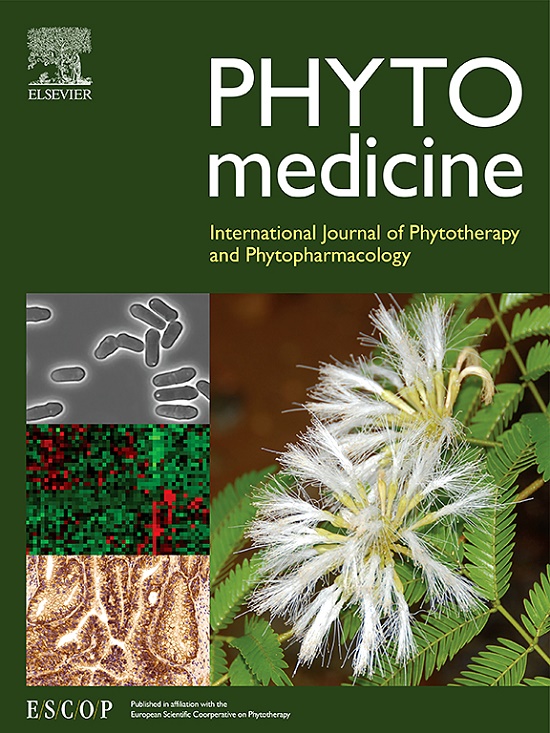Xin-Ji-Er-Kang balances mitochondrial fusion and fission to protect cardiomyocytes in mice with heart failure by regulating the ERα/SIRT3 pathway
IF 6.7
1区 医学
Q1 CHEMISTRY, MEDICINAL
引用次数: 0
Abstract
Background
Mitochondrial dynamics imbalance is an essential pathological mechanism in heart failure (HF). The Chinese herbal formula Xin-Ji-Er-Kang (XJEK) has demonstrated good therapeutic effects in various cardiovascular disease models. However, whether XJEK treats HF by regulating mitochondrial dynamics homeostasis and its specific molecular mechanisms remain elusive.
Purpose
To investigate the effect of XJEK on restoring the disrupted mitochondrial dynamics homeostasis in HF and elucidate the potential regulatory mechanism.
Study-design/methods
A mouse model of myocardial ischemia-reperfusion (MIR)-induced HF was established to assess the cardioprotection of XJEK. Subsequently, network pharmacology was employed to predict the mechanism by which XJEK treated HF. Moreover, gene silencing was employed to explore the potential mechanisms behind the cardioprotective effects of XJEK in AC16 cells subjected to hypoxia/reoxygenation (H/R).
Results
XJEK treatment significantly attenuated myocardial fibrosis and ameliorated ventricular remodeling in post-MIR-induced HF mice. Network pharmacology analysis identified the estrogen receptor α (ERα) as a key regulator of XJEK-mediated cardioprotection. XJEK disordered mitochondrial dynamics in the hearts of MIR-induced HF mice. In addition, XJEK restored mitochondrial fusion-fission imbalance and facilitated ERα nuclear translocation to up-regulate sirtuin 3 (SIRT3) expression in the hearts of MIR-induced HF mice and H/R-induced AC16 cells. Notably, ERα depletion in cardiomyocytes completely abrogated the cardioprotective effects of XJEK.
Conclusion
XJEK safeguards the hearts in mice with MIR-induced HF by facilitating ERα nuclear translocation to up-regulate SIRT3 expression to rescue the mitochondrial fusion-fission imbalance. This study establishes a new theoretical basis for treating HF with XJEK.

求助全文
约1分钟内获得全文
求助全文
来源期刊

Phytomedicine
医学-药学
CiteScore
10.30
自引率
5.10%
发文量
670
审稿时长
91 days
期刊介绍:
Phytomedicine is a therapy-oriented journal that publishes innovative studies on the efficacy, safety, quality, and mechanisms of action of specified plant extracts, phytopharmaceuticals, and their isolated constituents. This includes clinical, pharmacological, pharmacokinetic, and toxicological studies of herbal medicinal products, preparations, and purified compounds with defined and consistent quality, ensuring reproducible pharmacological activity. Founded in 1994, Phytomedicine aims to focus and stimulate research in this field and establish internationally accepted scientific standards for pharmacological studies, proof of clinical efficacy, and safety of phytomedicines.
 求助内容:
求助内容: 应助结果提醒方式:
应助结果提醒方式:


